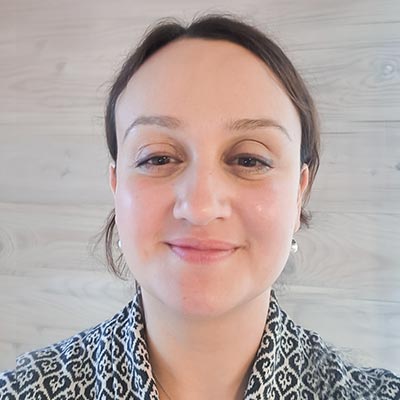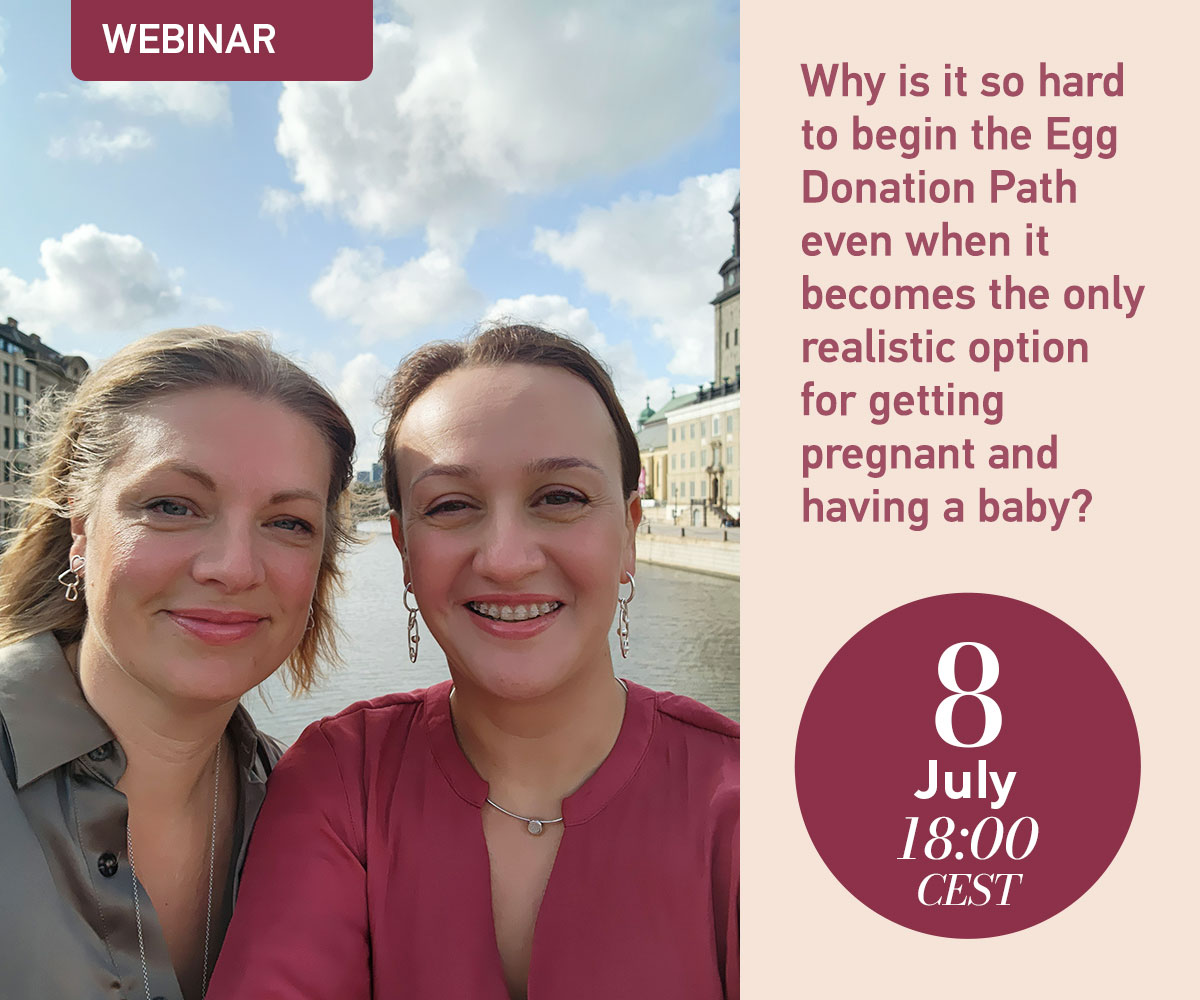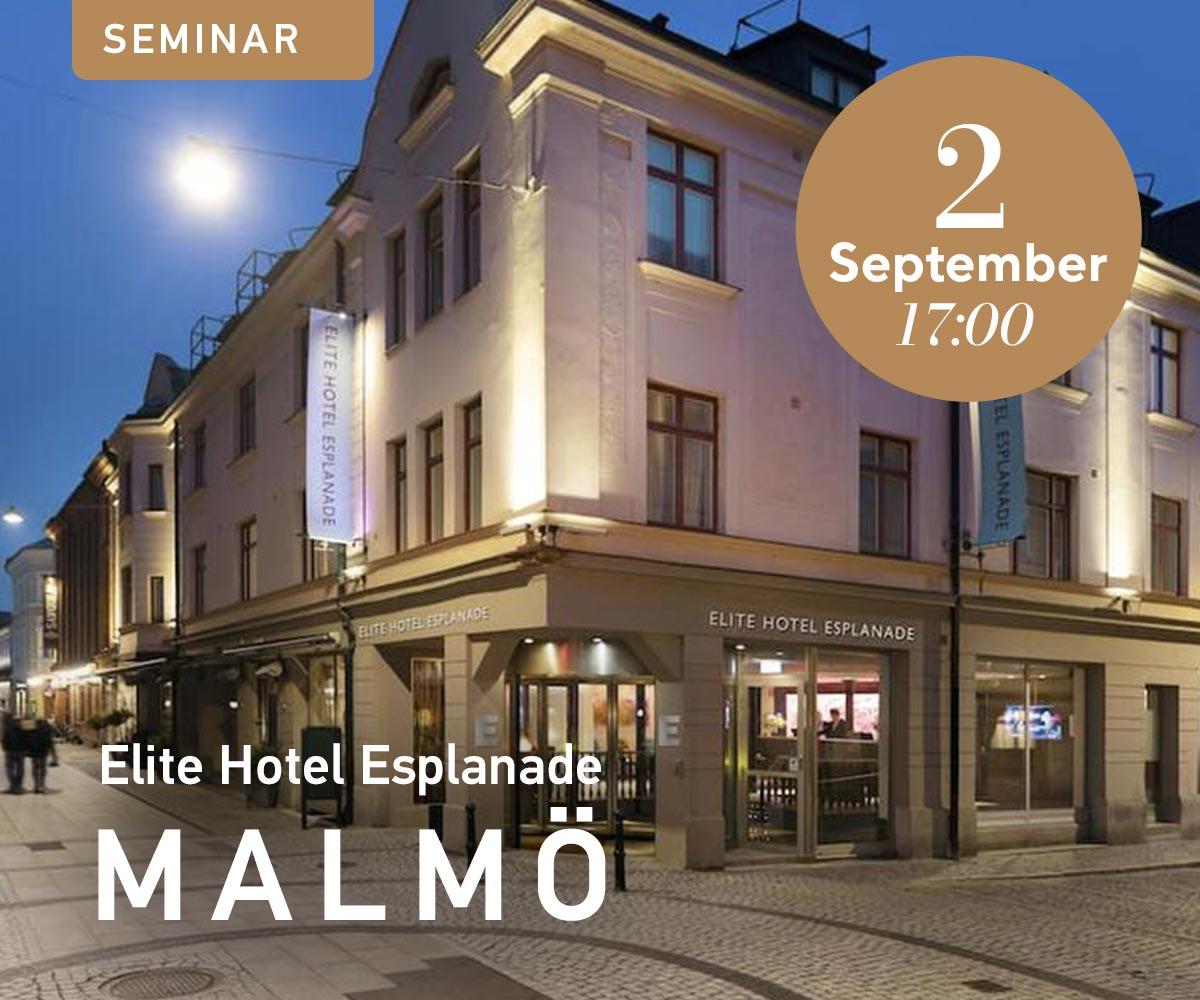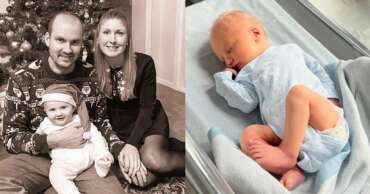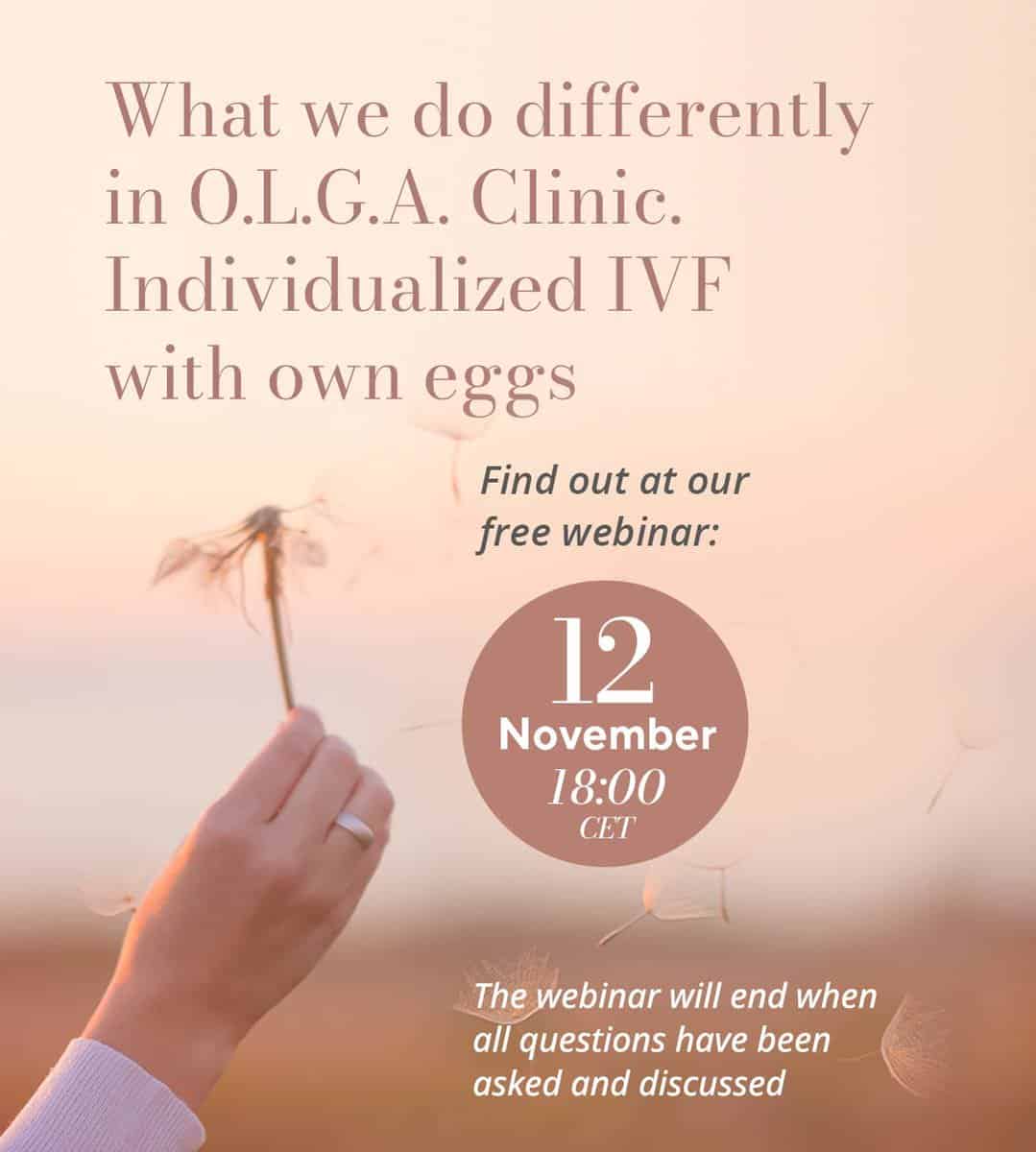 Patients come to us after multiple unsuccessful IVF attempts and losses. We are helping them achieve successful pregnancy and live birth using individualized IVF with their own eggs and sperm.
Patients come to us after multiple unsuccessful IVF attempts and losses. We are helping them achieve successful pregnancy and live birth using individualized IVF with their own eggs and sperm.
- Would you like to listen to the reports of our patients and find out what methods in O.L.G.A. Clinic has helped them finally become parents?
- Would you like to know what OLGA Fertility Clinic is doing differently in the own-egg-IVF-process?
Join our webinar on 12 November at 18:00 CET!
"What we do differently in O.L.G.A. Clinic. Individualized IVF with own eggs."
Attendance is free. The information is priceless.
The number of places is limited
 Frida and Carl came to O.L.G.A. Clinic after 3 unsuccessful IVF attempts in Sweden and several pregnancy losses. They have got their lovely baby boy on their very first IVF attempt in O.L.G.A. Clinic, using individualized IVF with their own eggs and sperm.
Frida and Carl came to O.L.G.A. Clinic after 3 unsuccessful IVF attempts in Sweden and several pregnancy losses. They have got their lovely baby boy on their very first IVF attempt in O.L.G.A. Clinic, using individualized IVF with their own eggs and sperm.
Would you like to find out what has helped Frida and Carl finally become parents?
Would you like to know what OLGA Fertility Clinic does differently?
 A very dear couple😍, Frida, 40 and Jon, 38, both medical doctors from Sweden, came to us in Cyprus after 5 unsuccessful IVF attempts in Sweden and Finland.
A very dear couple😍, Frida, 40 and Jon, 38, both medical doctors from Sweden, came to us in Cyprus after 5 unsuccessful IVF attempts in Sweden and Finland.
Overall in those 5 IVF cycles 6 fresh embryos were transferred on day 2-3 with no success.
In all 5 IVF cycles only one blastocyst was achieved, transferred frozen with no result😢
❌ IVF №1, Sweden
14 eggs, 1 fresh embryo on day 3
missed abortion, no blastocysts frozen
❌ IVF №2, Sweden
5 eggs, 1 fresh embryo on day 3
no pregnancy, 1 blastocyst frozen
FET -> negative
❌ IVF №3, Sweden
6 eggs, 2 fresh embryos on day 3
no pregnancy, no blastocysts
❌ IVF №4, Finland
9 eggs, 1 fresh embryo on day 3
no pregnancy, no blastocysts
❌ IVF №5 Finland
8 eggs, 1 fresh embryo on day 2
no pregnancy, no blastocysts
✅ IVF №6, OLGA Cyprus
15 eggs, 7 blastocysts
4 chromosomally normal
1FET -> negative
2FET -> baby
Would you like to find out what treatment has helped Frida and Jon achieve successful pregnancy and live birth using their own eggs and own sperm after 5 failed IVF attempts in Sweden and Finland?
Would you like to learn why O.L.G.A. Clinic makes a difference in IVF with own eggs and own sperm?
Join Frida and Jon in our webinar on November 12 at 18:00 CET and find out more!
 A very lovely couple, Linnéa, 30 and Erik, 35 came to us in Cyprus after 4 IVF in Sweden with just one embryo on day 3 in all the 4 IVF cycles together. They have got two blastocysts and their baby boy💙 on the very first IVF attempt by us in Cyprus, using individualized IVF with their own eggs, own sperm and PGT-A.
A very lovely couple, Linnéa, 30 and Erik, 35 came to us in Cyprus after 4 IVF in Sweden with just one embryo on day 3 in all the 4 IVF cycles together. They have got two blastocysts and their baby boy💙 on the very first IVF attempt by us in Cyprus, using individualized IVF with their own eggs, own sperm and PGT-A.
❌ IVF №1, Sweden
11 eggs
no embryos
❌ IVF №2, Sweden
15 eggs
1 fresh embryo on day 3
no pregnancy
no blastocysts
❌ IVF №3, Sweden
16 eggs
no fresh transfer due to OHSS risk
no embryos suitable for freezing
❌ IVF №4, Sweden
8 eggs
no embryos
✅ IVF №5, OLGA Cyprus
11 eggs
2 blastocysts
1 chromosomally normal
a baby 🥰
Would you like to know what has helped Linnéa and Erik achieve successful pregnancy and live birth?
Would you like to learn more about our individualized approach to IVF with own eggs and own sperm?
Join Linnéa and Erik in our free webinar 12 November at 18:00 CET and find out more!
How Does the OLGA Clinic Approach IVF Differently with Your Own Eggs?
While science and medicine have advanced to tackle many challenges, including infertility, we know that modern methods on their own cannot work without the fine-tuning of our biology. The human body, particularly a woman's reproductive system, requires personalized care and attention to truly make a difference.
The Role of PGT-A
Preimplantation Genetic Testing for Aneuploidies (PGT-A) is a remarkable tool in IVF that identifies chromosomally normal embryos. However, it’s important to understand that PGT-A doesn’t improve the quality of eggs or embryos; it can only select from the ones available. It can check and indicate but never create.
Our Focus: Quality and Quantity of Eggs
To help our patients achieve successful pregnancy using their own eggs we should create as many eggs as possible of as high quality as possible. This will enable us to get enough blastocysts and then PGT-A will identify those that are chromosomally normal.
Did you know that at age 38, only one in three blastocysts is chromosomally normal? This ratio drops to one in five by the age of 41.
Patients who come to us have been through multiple unsuccessful IVFs previously, most of them are over 40 and they usually have a reduced ovarian reserve. The challenge is to get enough blastocysts to find 2-3 chromosomally normal ones. And when we succeed, the chances of a successful pregnancy are high.
Live birth rates per transfer of one chromosomally normal blastocyst are 52%. This means that within three transfers, 9 out of 10 patients achieve a live birth.
Tailored to You: Our Individualized Approach
We don’t just look at numbers; we look at a woman. We analyze her health history and biological characteristics to fine-tune every aspect of her treatment. We improve overall health, influencing immature eggs in ovaries, getting them strong and ready for their final output several months before the actual ovarian stimulation begins.
Then we use individualized stimulation of the ovaries tuned with individual rhythms of each woman’s ovaries, giving eggs enough time to mature, multiply their mitochondria and thus
collect energy and strength for the future cell division. The process of eggs’ growth is very personal and delicate, it can be compared to flowers’ blossom as every flower needs its own temperature, level of moisture and blooms at its own speed.
Why Eggs Matter So Much
Think of an egg as the powerhouse of early development.
The egg carries the whole factory for production of the embryo’s cells in the first weeks of development. Sperm just brings a half of genetic material. The egg cytoplasm provides the machine for production, the substrate and the fuel. So, creating components and viable eggs is the most important part of success. If this is not done, PGT-A is of no use because there will be no blastocysts for testing or there will be weak blastocysts which cannot even be tested.
Thanks to such an individually tailored stimulation, tuned to this particular woman’s biology, 50% of our patients get more blastocysts per one IVF cycle with us than they used to have per one cycle in other clinics before; 33% of our patients are having more blastocysts in one IVF cycle with us than in ALL their IVF cycles previously.
Creating the Perfect Home for Your Embryo
But every single embryo with a normal set of chromosomes needs a nice place to implant, live and grow for 9 months.
So after having got a healthy embryo, we prepare its perfect home.
Many patients of ours have more than one reason why they are not pregnant yet (otherwise they would not have come to us because they would have gotten pregnant at some point at their local clinics). Many have diverse maternal factors interfering with implantation: metabolic, hormonal, immune, inflammation in the uterus and/or the whole body, shifting of implantation window and others.
We will investigate and treat those conditions which may interfere with successful implantation and pregnancy development and only when the environment in the female body and the uterus is fully optimized, we are going to transfer a chromosomally normal embryo into an optimally prepared endometrium in the right timing.
Please join us 12 November at 18:00 CET and find out about your options — it is free!
The webinar will end when all questions have been asked and discussed.
Please feel free to share this invitation with those who may be interested










